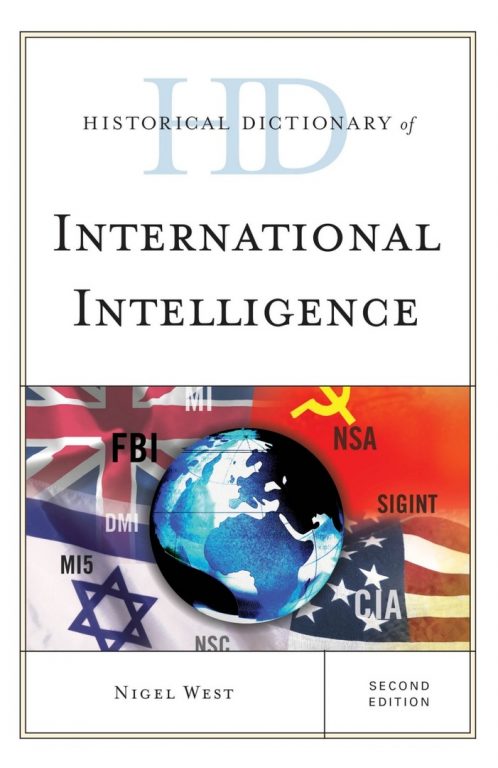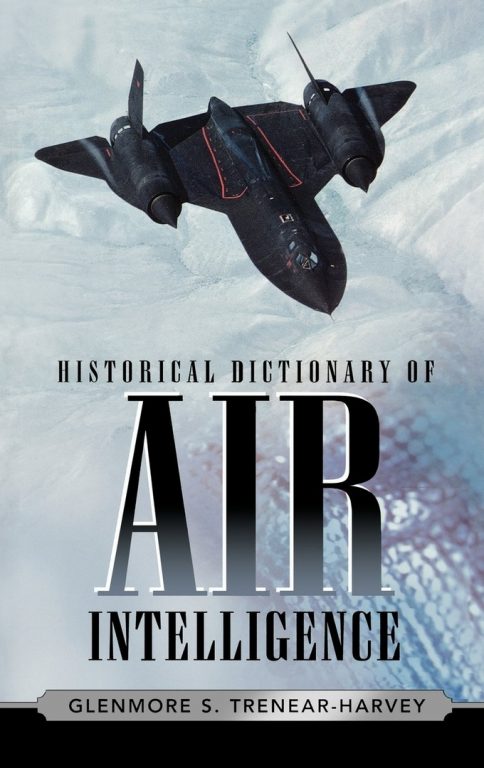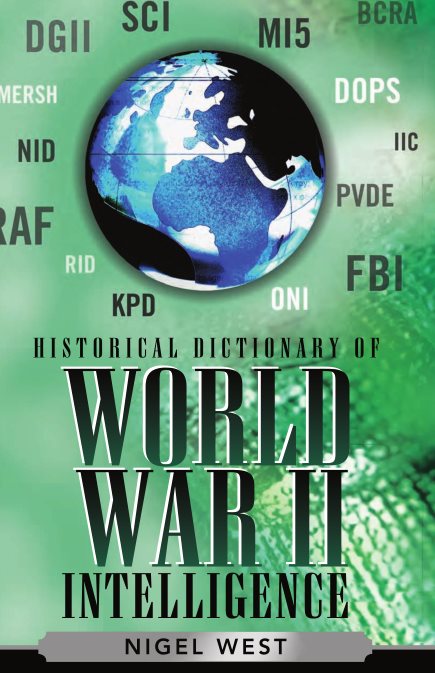1) Historical Dictionary of Middle Eastern Intelligence – Ephraim Kahana, Muhammad Suwaed
Scarecrow Press | 2009 | PDF
Given the rivalries and suspicions prevailing in the Middle East, it is not surprising that most of these states are very concerned about espionage and infiltration. With the additional threat of terrorism, nuclear weapons, a large U.S. military presence, and the Arab-Israeli conflict, the result is an impressively busy intelligence industry, proportionately larger and more extensive than in most other regions.
The Historical Dictionary of Middle East Intelligence addresses intelligence issues in the region from ancient history and the Middle Ages through modern times, covering the decline of the Ottoman Empire, intelligence activity in the Middle East during and between the two world wars, and the interplay between colonial and local intelligence and counterintelligence agencies of the period. It also presents the relatively new fundamentalist terrorist organizations that have had a significant impact on international relations and on the structure and deployment of intelligence, counterintelligence, and other security organs in the Middle East today. With a chronology, an introductory essay, and over 300 cross-referenced dictionary entries on important events and key organizations involved in all aspects of intelligence gathering and analysis, as well as the biographies of key players, this is an important reference on the current situation in the Middle East.
2) Historical Dictionary of International Intelligence – Nigel West
Rowman & Littlefield Publishers | 2015 | PDF
Intelligence is now acknowledged as the hidden dimension to international diplomacy and national security. It is the hidden piece of the jigsaw puzzle of global relations that cements relationships, undermines alliances and topples tyrants, and after many decades of being deliberately overlooked or avoided, it is now regarded as a subject of legitimate study by academics and historians.
This second edition of Historical Dictionary of International Intelligence covers its history through a chronology, an introductory essay, and an extensive bibliography. The dictionary section has over 500 cross-referenced entries on espionage techniques, categories of agents, crucial operations spies, defectors, moles, double and triple agents, and the tradecraft they apply. This book is an excellent access point for students, researchers, and anyone wanting to know more about the international intelligence.
3) Historical Dictionary of Air Intelligence – Glenmore S. Trenear-Harvey
Scarecrow Press | 2009 | PDF
From the moment man learned how to ascend off the ground, the strategic significance of air intelligence became apparent. This relatively new discipline―the first dedicated air reconnaissance missions were undertaken in 1870 during the siege of Paris when tethered French balloons were employed to spot enemy positions and direct artillery fire onto them―has developed at an astonishing speed. Over the past century air intelligence has moved from hazardous observation balloons to micro-circuitry, which can send pictures from a video camera mounted on a remotely-controlled vehicle the size of a hummingbird.
The Historical Dictionary of Air Intelligence relates the evolving history of the rapidly advancing field of air intelligence. A chronology, an introductory essay, and cross-referenced dictionary entries on the agencies, agents, operations, equipment, tradecraft, and jargon of air intelligence make this reference as essential as it is fascinating.
4) Historical Dictionary of World War II Intelligence – Nigel West
Scarecrow Press | 2007 | PDF
In the years immediately following World War II, information was disclosed about what has been termed the shadow war of the existence of hitherto secret agencies. In Germany it was the Abwehr and the Sicherheitsdienst; in Britain it was MI5, the Secret Intelligence Service (MI6) and Special Operations Executive (SOE); in the United States it was the Office of Strategic Services (OSS) and the Special Intelligence Service (SIS) of the Federal Bureau of Investigation (FBI); in Japan it was the Kempet’ai; and in Italy the Servicio di Informazione Militare (SIM). Sixty years after World War II secrets are still being revealed about the covert activities that took place. Many countries had secret agencies maintaining covert operations, but even ostensibly neutral countries also conducted secret operations. Changes in American, British, and even Soviet official attitudes to declassification in the 1980s allowed thousands of secret documents to be made available for public examination, and the result was extensive revisionism of the conventional histories of the conflict, which previously had excluded references to secret intelligence sources.
The Historical Dictionary of World War II Intelligence tells the emerging history of the intelligence world during World War II. This is done through a chronology, an introduction, a bibliography, and hundreds of cross-referenced dictionary entries on the secret agencies, operations, and events. The world of double agents, spies, and moles during WWII is explained in the most comprehensive reference currently available.
5) Historical Dictionary of Sexspionage – Nigel West
Scarecrow Press | 2009 | PDF
In a surprising number of espionage cases sex has played a significant role―often only in the background―possibly as a reason why a particular individual has lived beyond his means and is in desperate need of cash. FBI agent Earl Pitts sold secrets to the Soviets to ease his financial burdens, which came from his habitually heavy use of male and female prostitutes. Yuri Nosenko collaborated with the CIA after having misappropriated KGB funds to entertain expensive women while on official duties in Geneva, and Aleksandr Ogorodnik of the Soviet foreign ministry was persuaded to become a spy by his pregnant Spanish lover, an agent recruited by the CIA.
In the realm of human behavior, sex can be the catalyst for risky or reckless conduct. The Historical Dictionary of Sexspionage explores this behavior through a chronology, an introduction, a bibliography, and hundreds of cross-referenced dictionary entries on the secret agencies, operations, and events. From Delilah’s seduction of Samson in 1161 BC to State Department official Donald Keyser’s conviction of passing secrets to Isabelle Cheng, a Taiwanese intelligence officer, in 2007, Nigel West recounts the history of sexspionage.
 1 / 5
1 / 5 2 / 5
2 / 5 3 / 5
3 / 5 4 / 5
4 / 5 5 / 5
5 / 5